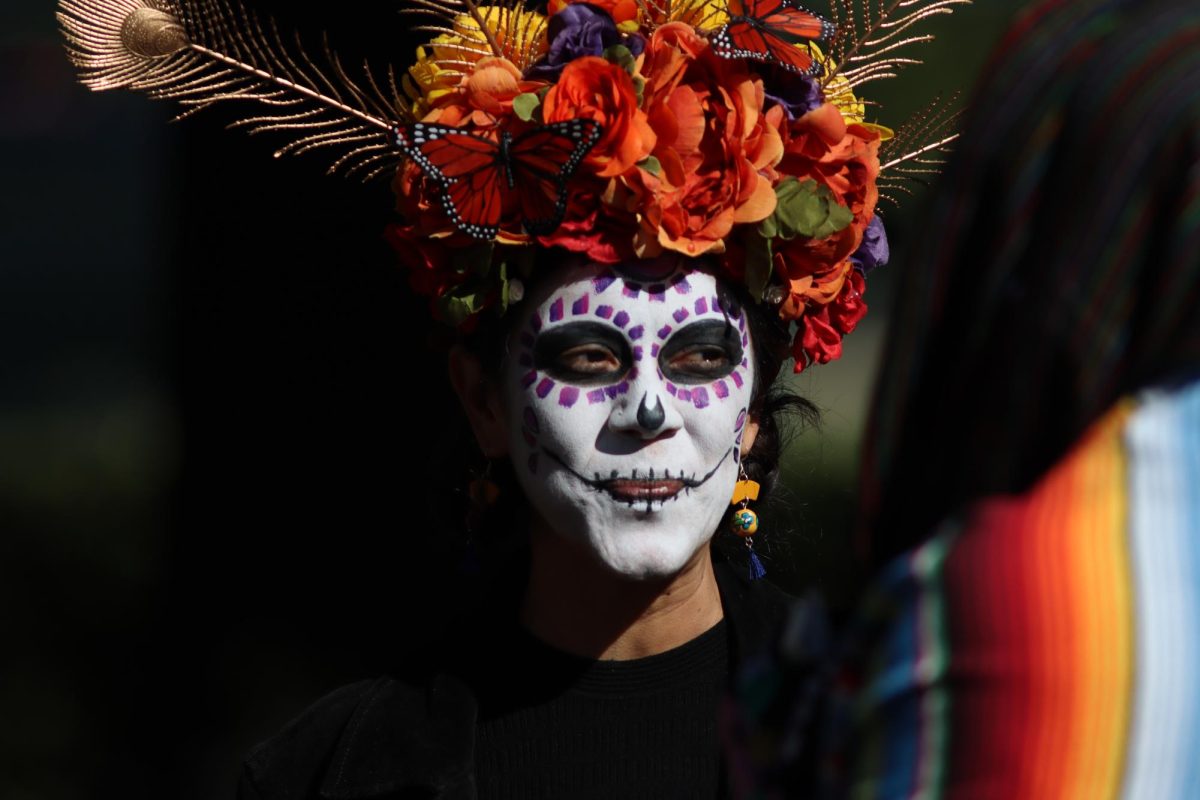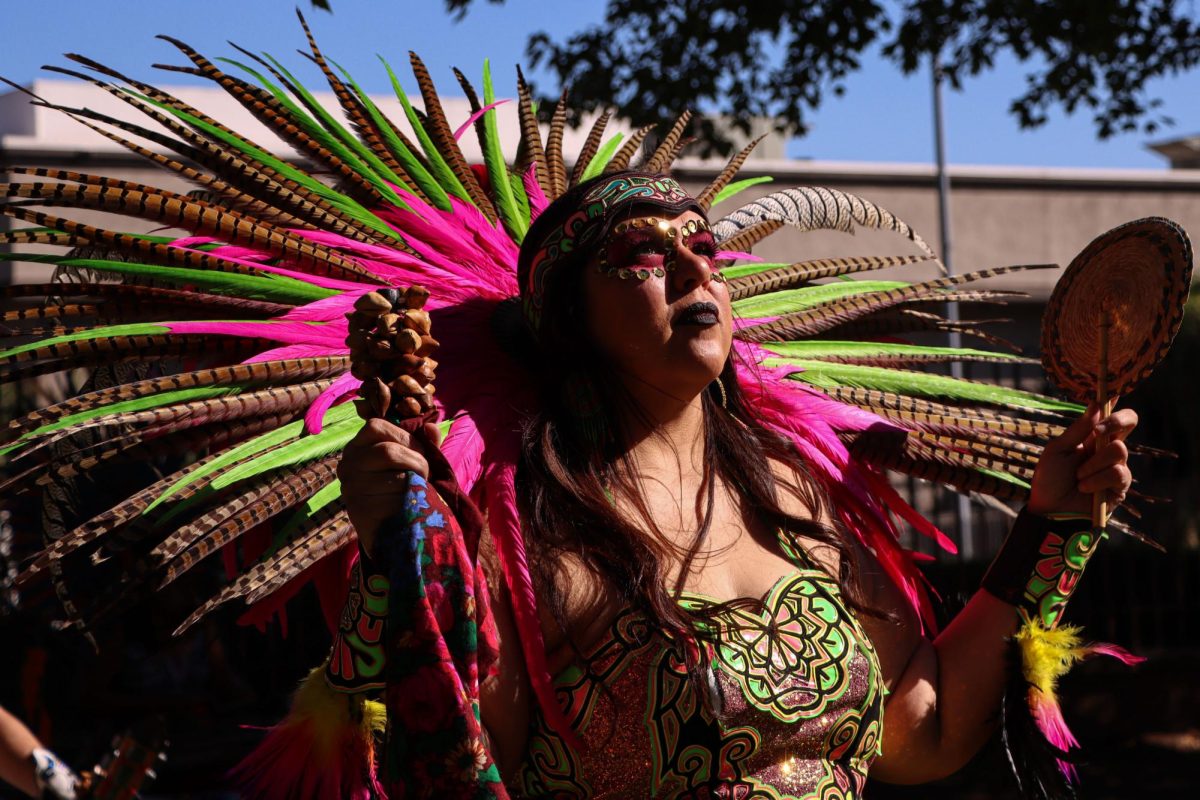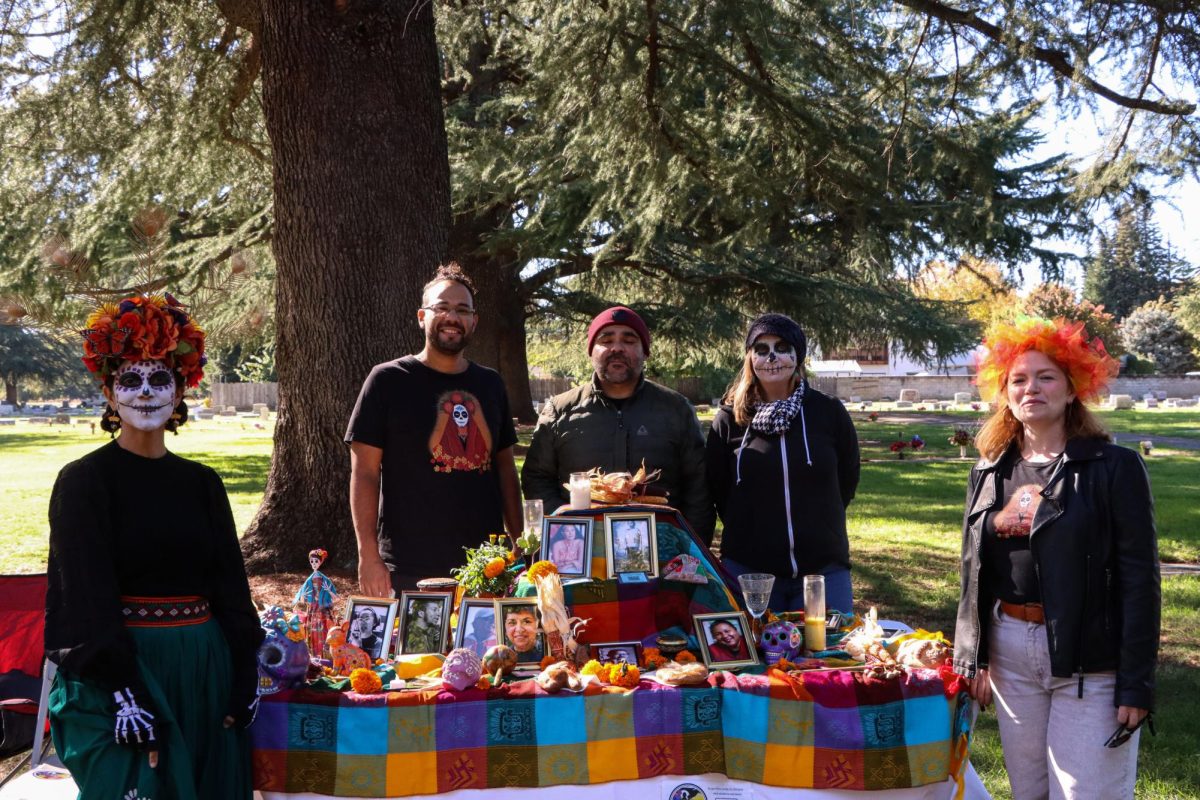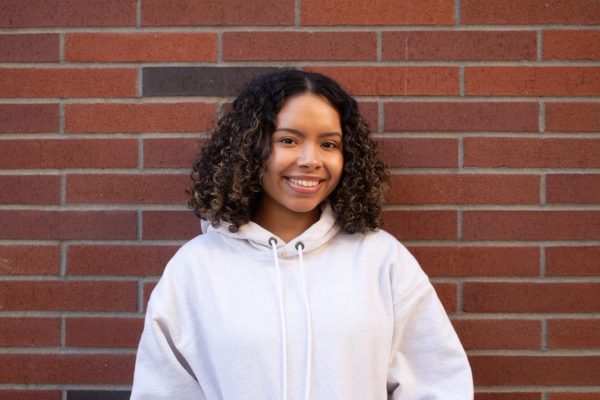Somber mariachi music serenaded Chico Cemetery’s eastern lawn during its annual Dia de los Muertos celebration on Oct. 28.
Dia de los Muertos is a traditional holiday originating from Mexico and celebrated among various countries. Loved ones who have passed away are honored and remembered during November 1-2.
Mariachi Mixteco’s rendition of Vicente Fernandez’s “Volver, Volver” set the bittersweet tone for a morning of performances, face painting and vendors.
A line stretched across the lawn of attendees eager to have their faces painted as catrinas, courtesy of Funny Faces Chico. Children and adults alike waited to have their faces transformed with traditional Day of the Dead skull makeup.
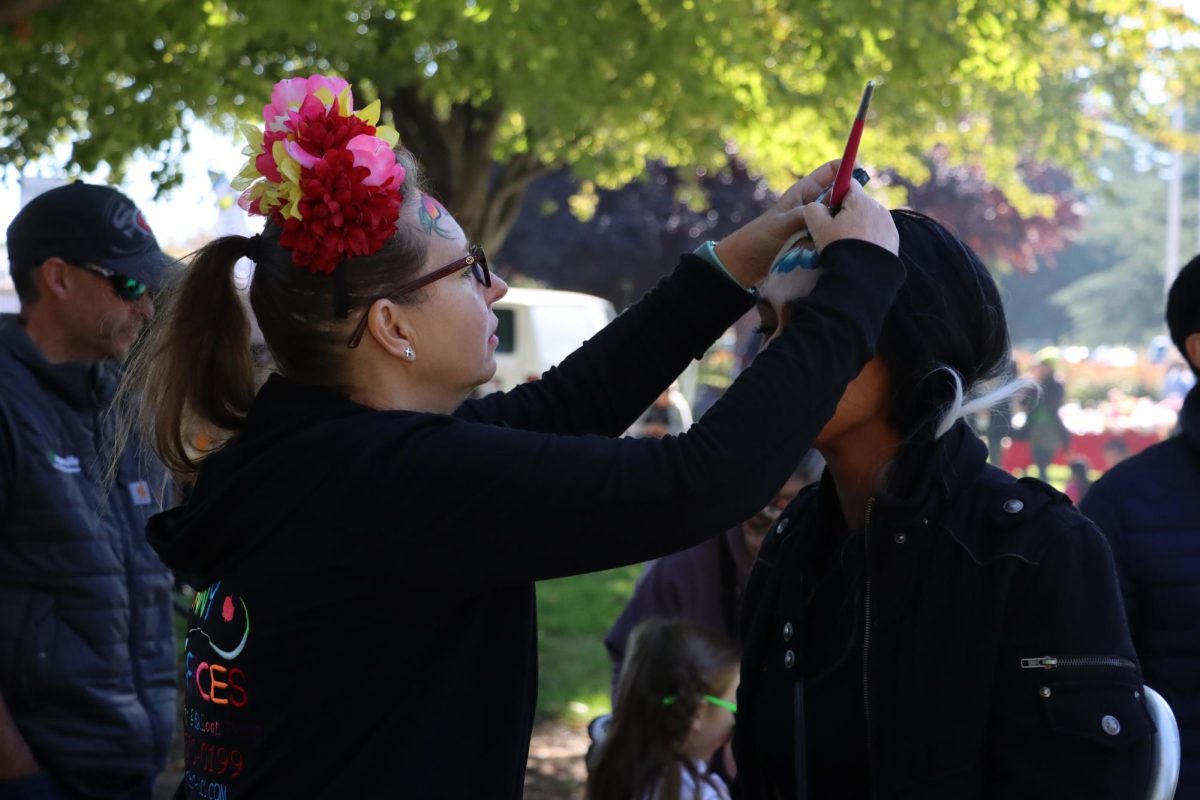
Ocelotecame, an Aztec music and dance group, was also in attendance to honor those who have passed with traditional and spiritual dances.
The music came together through the harmony of various instruments including shell trumpets and drums. Dancers performed dances such as Tonantzin and Tletl to represent the forces and elements of nature. For their finale the dancers invited audience members to dance along with them.
Co-director of Ocelotecame Yolzelik Medina was in charge of the music during the performance. She described the message and importance behind their dances.
“So what we do is, these were all the elements or the thanking of Mother Earth, remembering her, for she gives us sustenance,” Medina said.
Medina explained that they view this day as a remembrance of their ancestors and as a spiritual calling from them.
Attendee Joana Campos likes to look at loss in a different way besides just grieving.
“Dia de Muertos has become an event that helps the community expand their ways of thinking about celebrations,” Campos said.
Campos is filled with hope that Chico will continue to embrace the importance of representation within the community.
“It thrills me that Chico is moving in the direction of becoming more culturally accepting of different ways of being,” Campos said.
Campos was also present on behalf of the Norcal Anti-racism Coalition, which helped display an altar with images of Black, Indigenous and other people of color who impacted the world through their social justice actions. The names of activists were crowdsourced from the community.
Campos believes more people should have the opportunity to learn about diverse topics.
“That’s the beginning of growth when people ask questions and are wondering about something new. I think that events like this make people wonder about things that they didn’t previously know,” Campos said.
Campos was joined by Ambrosia Krinsky at the NCAC table. Krinskey echoed Campos’ hope for the future.
“The demographics [in Chico] are changing. We are very close to having 50% of BIPOC children in the school district now. That means in our community at large too,” Krinsky said. “That’s not necessarily reflected in the dominant culture of the town. So I think that the impact of having events like this lets people know that their families belong.”
Kevin Gately, market sales manager of the cemetery, was delighted to see such a cross-section of cultures in attendance.
“We have a large Hispanic and Latino community. Not only that, but people outside of [these] communities can get to enjoy it, see what it is, and embrace it,” Gately said.
Embracing death is an integral aspect of Day of the Dead. Gately has hopes that events such as these might help eliminate the stigma around death and cemeteries.
“The cemetery is an integral part of the community. It is a part of the community. People live here, they die here, and this is where they come,” Gately said. “The cemetery doesn’t have to be a scary place.”
Maricarmen Becerra-Gonzalez and Milca Elvira Chacon can be reached at orionmanagingeditor@gmail.com







